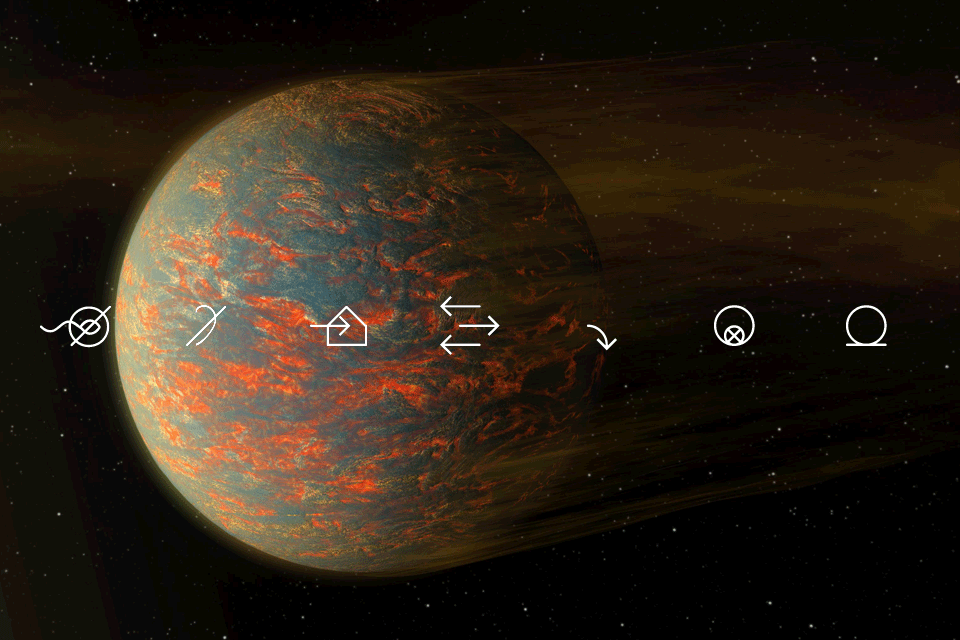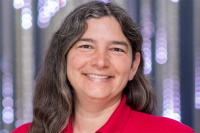Want to uncover extraterrestrial lifetime? Enlist the assistance of the public.
NASA’s Rachel Zimmerman-Brachman ’95 is effective with amateur astronomers to research for planets beyond our photo voltaic system wherever daily life might prosper.
 Image credit: NASA/JPL-Caltech)/Collage: Jessica Tanny
Image credit: NASA/JPL-Caltech)/Collage: Jessica Tanny
A collection of Blissymbols icons animate above a NASA artist’s rendering of the very hot, rocky exoplanet identified as 55 Cancri e.
July 1, 2021
NASA demands assist from the community to study planets beyond our solar method. Rachel Zimmerman-Brachman ’95 is top the recruitment work.
In 2019, she commenced managing outreach functions for Exoplanet Watch, a undertaking sponsored by NASA’s Universe of Learning effort and hard work to promote astrophysics studying and literacy.
The program asks amateur astronomers and college astronomy college students to switch their telescopes toward the stars in search of planets through our galaxy.
The only dilemma is that there are billions of potential candidates. Acquiring just a single can also be time-consuming. Therefore, it falls to Zimmerman-Brachman to rally and encourage the public to aid the effort.

Rachel Zimmerman-Brachman
“Space education and outreach is all about obtaining other persons thrilled about science and room,” Zimmerman-Brachman stated. “I have constantly loved room, and I love sharing my understanding about the planets with pupils and the general public,” she mentioned.
Zimmerman-Brachman was born in Canada. When she was 12, she invented the Blissymbol Printer for her seventh quality science reasonable task. The machine enables non-speaking men and women to use a touchpad to pick out symbols that are then translated into composed text and printed on paper. Blissymbols are even now in use now.
Just after graduating from Brandeis with a diploma in physics and acquiring a master’s diploma in room experiments from the Worldwide Room College in Strasbourg, France, she used quite a few periods to turn into an astronaut. She worked on the Area Eyesight Process for the International Place Station at the Canadian Area Agency around Montreal, Quebec.
She then moved to California to perform as a general public engagement expert at NASA’s Jet Propulsion Laboratory (JPL) in Pasadena, California, exactly where she expended 11 yrs operating on the Cassini mission to Saturn. Zimmerman-Brachman now spends substantially of her time coordinating the Exoplanet Enjoy citizen science task.
Exoplanets, quick for extrasolar planets, are planets outside of our photo voltaic program. For the reason that they orbit other stars, they are significantly as well far away to send place probes to examine directly.
Experts are primarily fascinated in acquiring planets that could likely maintain existence. The most probably candidates are planets orbiting their stars at a length that will make the temperature array on the world suited for liquid h2o to exist.
To day, scientists have identified and verified the existence of about 4,400 exoplanets, but this amount is anticipated to be in the tens of 1000’s within just the ten years.
“When I was a college student at Brandeis, exoplanets hadn’t been found but. It was only a handful of months just after my graduation in 1995 that the very first exoplanet was uncovered. When we uncovered how to seem for them, astronomers commenced acquiring exoplanets virtually in all places,” Zimmerman-Brachman said.
JPL’s astronomers primarily use the planetary transit method to detect exoplanets. Utilizing house-based, Earth-orbiting telescopes like Kepler and Transiting Exoplanet Study Satellite (TESS), they keep track of the dimming of a star’s light that happens when an exoplanet passes in entrance of it.
Researchers compete for time to use these telescopes. Planetary transits can get various hours.
By including newbie place fanatics throughout the earth in the research for exoplanets, JPL can proficiently check a lot of much more planetary transits. These citizen experts aid to observe transiting exoplanets and acquire facts about the precise timing of when the transit takes position.
Zimmerman-Brachman doesn’t know whether we will at any time find extraterrestrial existence, but if we do, she mentioned it may well consider the assistance of the general public to locate it.
“We design these projects with the general public in brain, so that any individual can lead to a greater knowledge of our universe,” she stated.